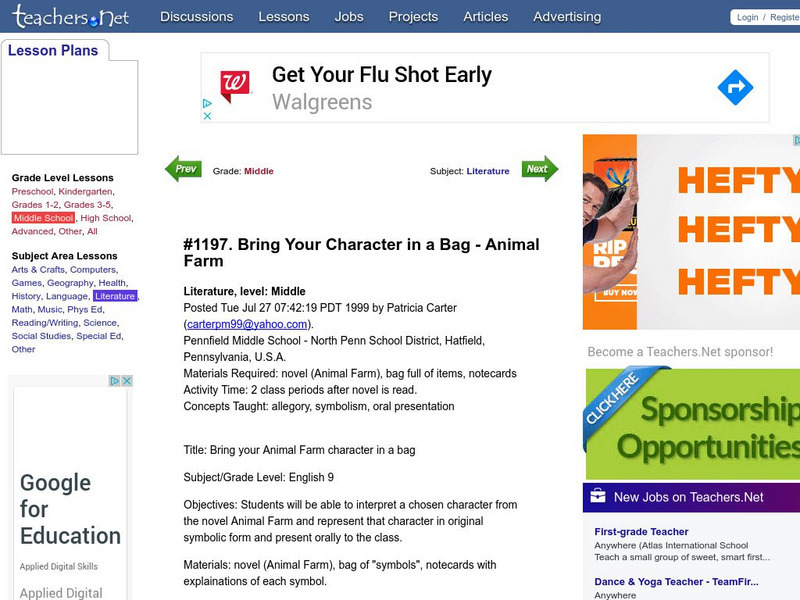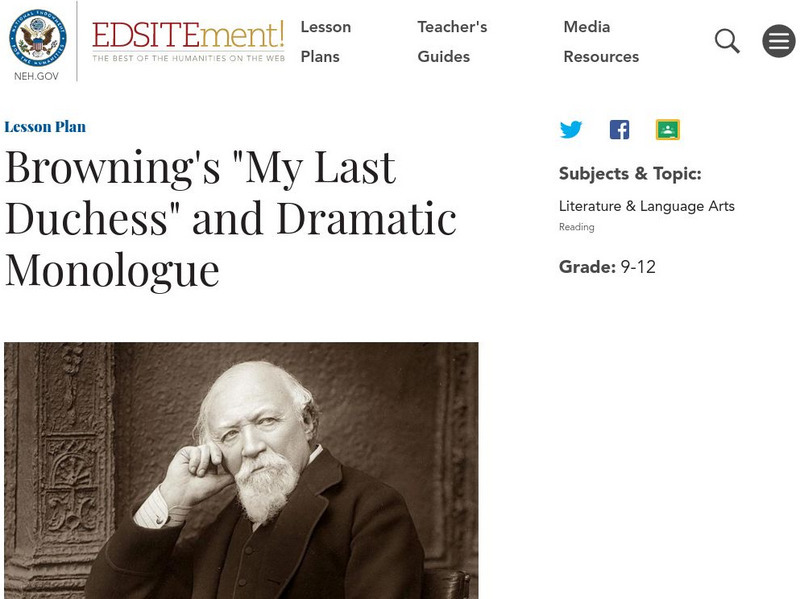Hi, what do you want to do?
Curated OER
Gender Bias in Language
Twelfth graders study the issues between male and females. In this current events lesson, 12th graders read an article and answer questions. Students watch a video and write an essay.
Curated OER
How Does It Move?
Students listen to the song, The Wheels on the Bus. They attempt to sing the song again, but change it for a tractor. They watch the book, A Visit With Grandma, through a projector, LCD panel, or big screen television and develop their...
Curated OER
Timeline - United States and Germany, Before, During, and After World War II
Students read novel Rosa's Miracle Mouse, research assigned years in small groups, and create timelines and Powerpoint presentations detailing interaction between Germany and the United States before, during, and after World War II.
Curated OER
Imagen e ldentidad/Image and Identity: Multiple Voices, Violations and Victories
Students spend a year involved in a project researching the diversity of Native Americans.
Curated OER
Making Lowell Our Place
Pupils investigate a community through different types of educational experiences. They use short field trips to experience the community in real life. they also conduct research using a variety of resources. Then students build the...
Curated OER
Geo Jammin' By DeSign - Day 6, Lesson 32: Appliqué-tion of Learning
Second graders hand stitch three different appliqué stitches using triangles as a motif.
Curated OER
Children in War and Strife: Case Studies
Students examine the lives of students in war torn countries. After reading case studies, they work together to answer discussion questions. They review the roles of the Human Rights Watch and Amnesty International and develop a museum...
Teachers.net
Teachers.net: Bring Your Character in a Bag Animal Farm
The main objective is for young scholars to be able to interpret a chosen character from the novel Animal Farm. Students will then have an opportunity to represent that character in original symbolic form and present it orally to the class.
Louisiana Department of Education
Louisiana Doe: Louisiana Believes: English Language Arts, Grade 12: Undaunted Courage
Young scholars explore ideas prominent throughout westward expansion and American literature: myth versus reality. The texts present various perspectives of the West. Students consider the idealism and romance of the American spirit...
National Endowment for the Humanities
Neh: Edsit Ement: Browning's "My Last Duchess" and Dramatic Monologue
Reading Robert Browning's poem "My Last Duchess," students will explore the use of dramatic monologue as a poetic form, where the speaker often reveals far more than intended. The students will later write their own dramatic monologue...














